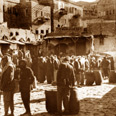

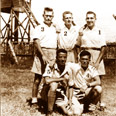
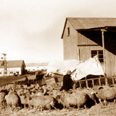
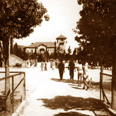
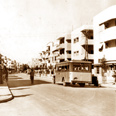
Shmuel and Daniel were twin brothers, the sons of one of Safed's veteran families. In the 1930s, with the 1929 events in the city still fresh in their minds, they helped establish the Beitar youth movement.
They were united by their love for the Land of Israel and the feeling that what took place in 1929 must never repeat itself.
The Pearl brothers loved to take pictures, and today, when they are no longer with us, many photos have remained telling the history of the era and perpetuating the country's landscapes at the time.
The photos were given to us by their children: Atzmona Waxman Shabtai, Daniel's daughter, and Naftali Pearl, Shmuel's son.



3. Postcard: Entrance to Safed, 1919. On the right, the public garden's gate; on the left, the Rothschild Hospital's fence; straight ahead is the home of Yoel Barshad, which was also the location of "Hagalil" printing house and the Anglo-Palestine Bank.

4. Liba and Menachem Burstein, the parents of Shmuel's wife, Miriam Pearl


6. Tobacco desiccation in Ein Zeitim, near Safed


8. The prisoners in the Kenya detention camp built a large garden shaped as a Star of David. The earth for the garden was smuggled in the escape tunnels dug by the detainees under the camp

9. The Burstein family (parents of Miriam, Shmuel Pearl's wife). From the right: Tzipora, Menachem, Liba and Eliyahu


11. The Carmel Hotel in Afula, founded by Itamar Unger



14. Tel Aviv's Allenby Street

15. Tel Aviv, corner of Allenby and Ben Yehuda streets
- For all trips to the past – click here















